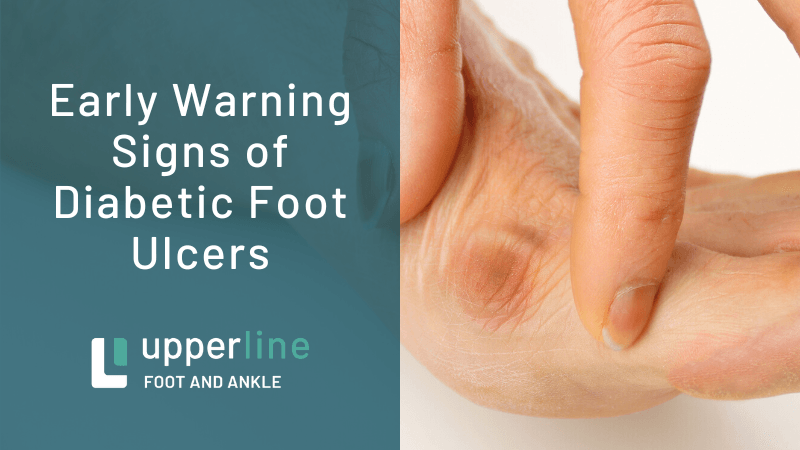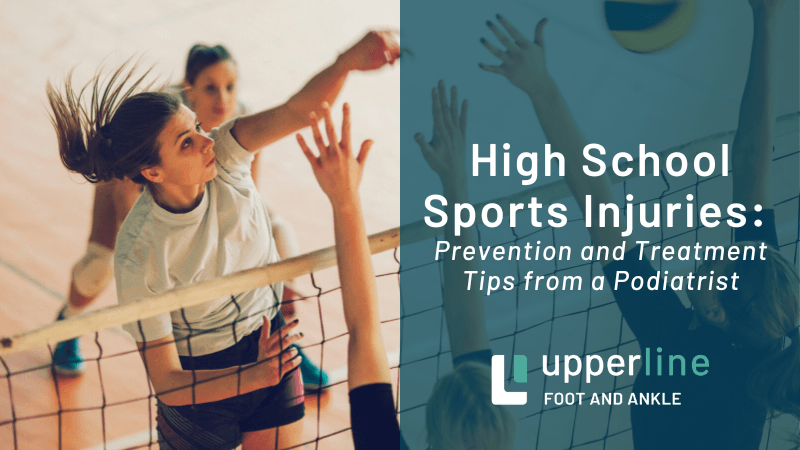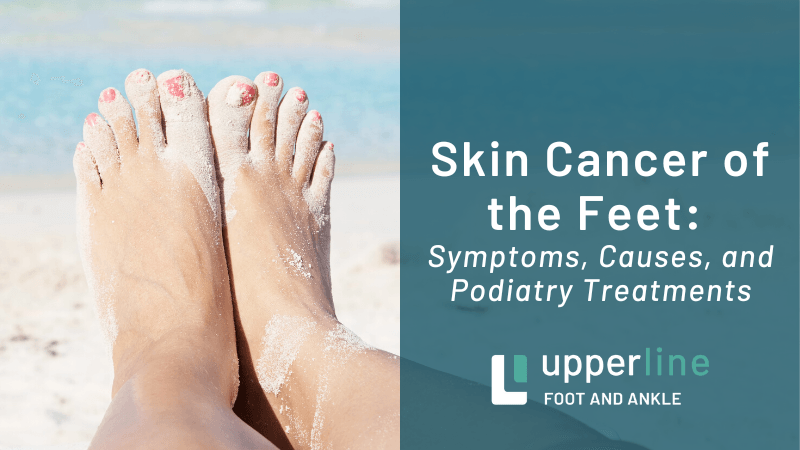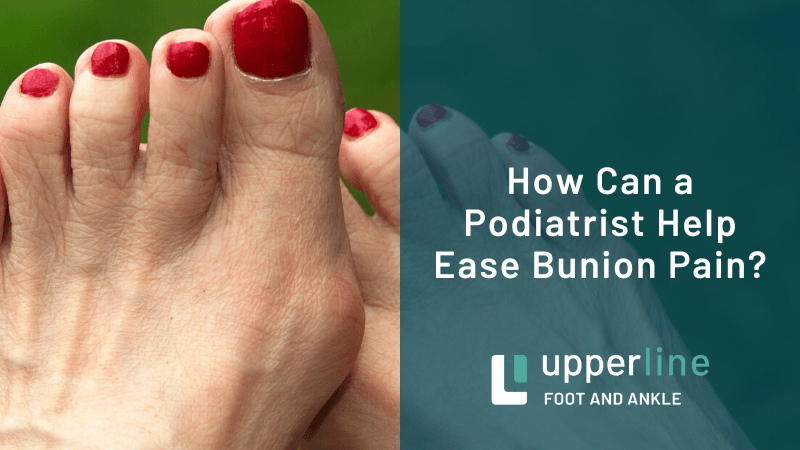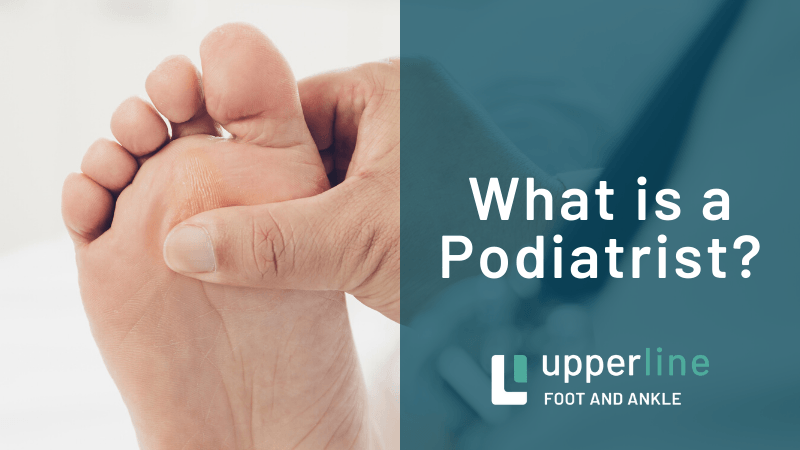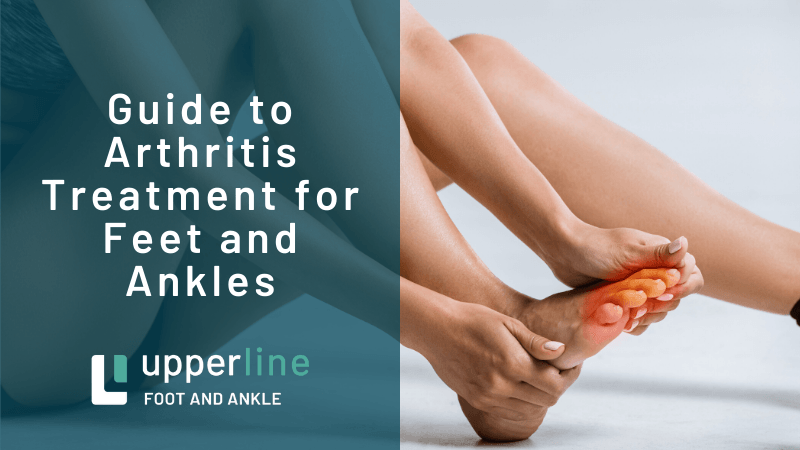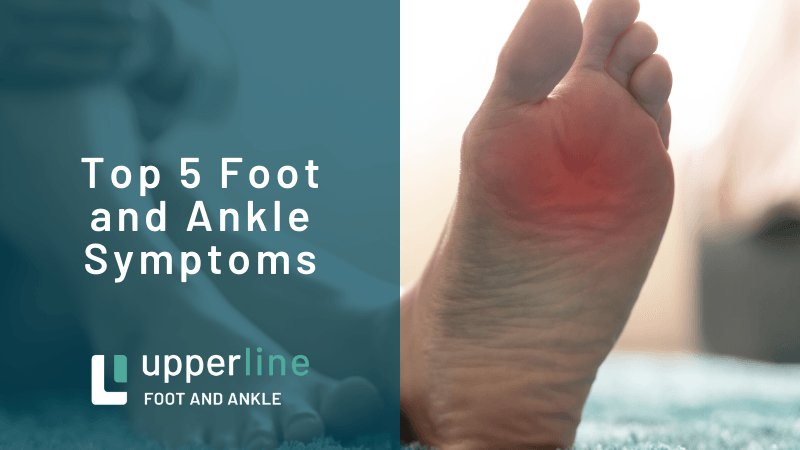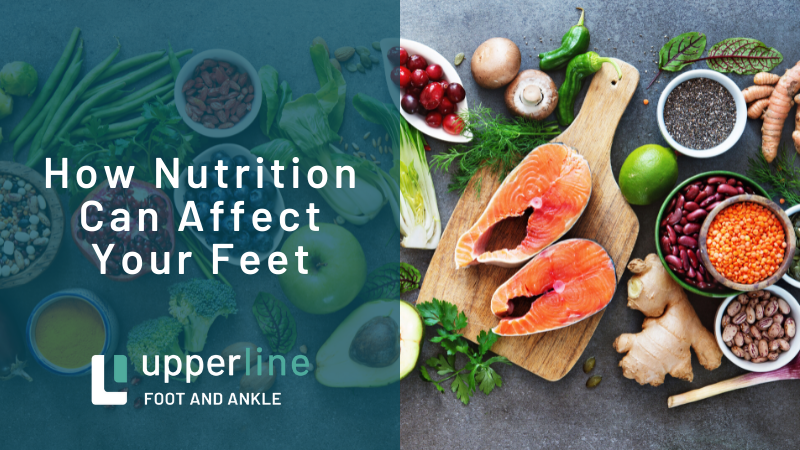Elevator Podiatrist - Corns and Calluses - Dr. Mike King
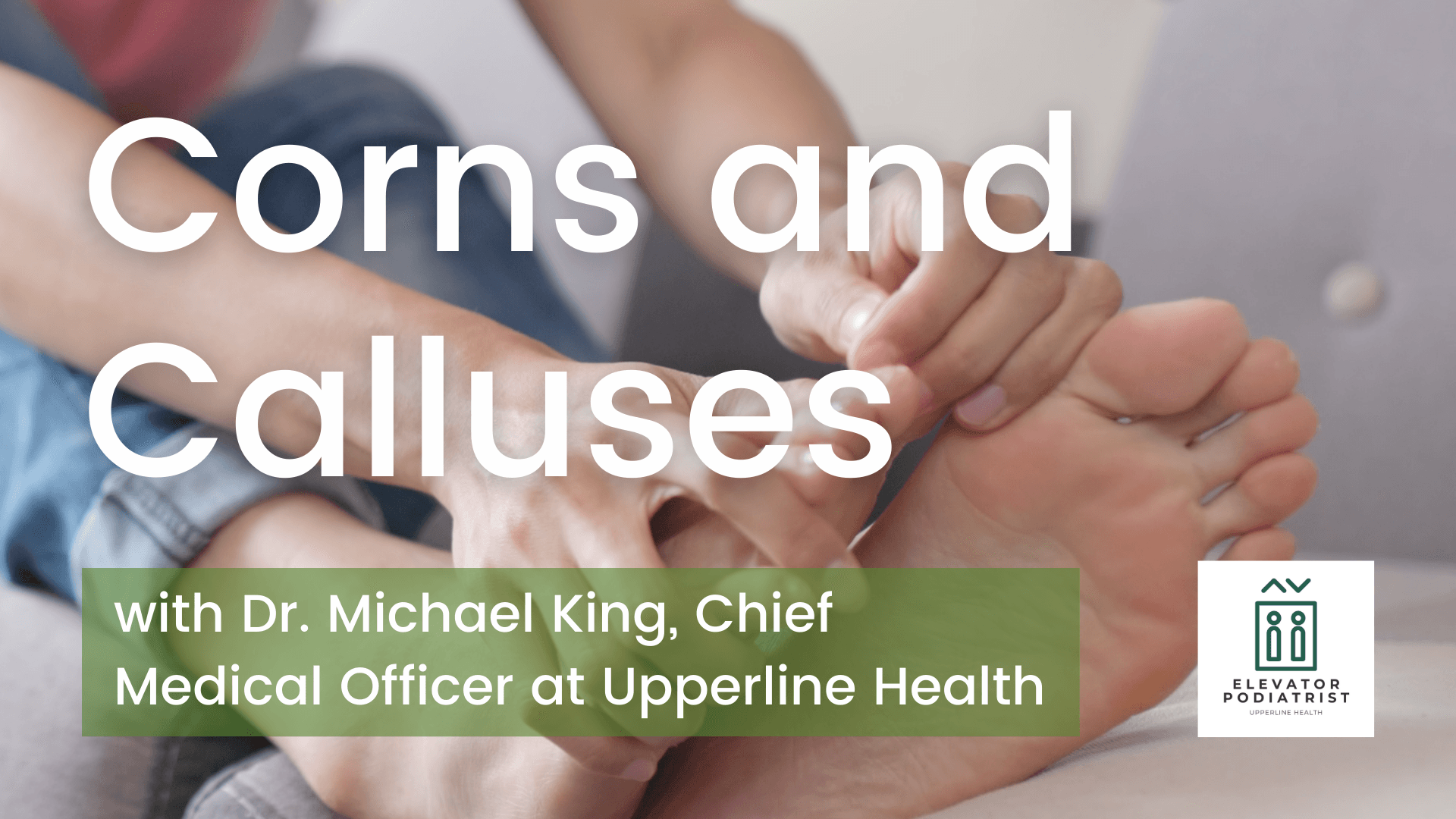
Michael King, DPM, FACFAS, FASPS, Chief Medical Officer at Upperline Health, discusses the difference in corns and calluses on the feet, how to prevent corns and calluses, different treatment options, the effectiveness of OTC treatments, and when to see a podiatrist for corns and calluses.
-
Episode Transcript
Joe Crosby (00:07):
Welcome to the elevator podiatrist, the show where we get the inside scoop on the latest treatments, technology and industry insights from leaders in the field of podiatry, you'll hear from foot and ankle specialist at the top of their game, as well as industry veterans who have paved the way for podiatry. As we know it today, join us as we take a ride to the top floor of foot care. I'm your host, Joe Crosby. And today I'll be speaking with Dr. Mike King, chief medical officer at upper line health in Nashville, Tennessee. A lot of the top we see that corns and calluses are there. They're kind of used entertained interchangeably the term. So you know, for the sake of, you know, telling the difference, what is the actual difference between corns and calluses?
Dr. Mike King (00:49):
Well, really, it's interesting because it's kind of a matter of semantics and a little bit of anatomy as well. So in general, calluses are things that are found on other parts of the foot, besides the digit on the bottom of the foot, on the back of the heel, on the edge of the heel on the side of the foot, whereas corns are more thought of as being part of a growth on a toe or on a digit. So, and this slight, the difference is they're both the similarities are that they're are both sickening of the skin. That's relates to excessive friction in a location, which we'll talk about later as to why corns tend to be more what's called nucleated or smaller, more circular and, and a little bit deeper in many cases, whereas most calluses tend to be flatter and they can be sick and it can be light.
Dr. Mike King (01:48):
But they tend to be flatter and a little bit more broad. Now there are things that can occur on the bottom of the foot that are called seed corns, which are also nucleated, or they have a center portion to them and they have there's something called an intractable plantar Keratoma or IPK in podiatry lingo where that is a nucleated or an in-growing kind of corn. And some people used to call them seed corns. So calluses and corns are essentially the same thing, but corns are thought of much more digitally oriented anatomically, whereas callouses can occur anywhere else. I mean, you can get a callus obviously on your hands from, you know, shoveling in the yard and raking mulch or digging a hole for a new well you can get callouses on your rear end if you're a cyclist who rides 200 miles a week, so callouses can occur anywhere where there's a friction point, but in essence, they're both in a what's called hyper keratosis or an extensive buildup of the keratotic of the superficial layer of the skin.
Joe Crosby (02:51):
So physically when I'm looking at it what you know, I think you said one is a little bit more circular. So what would be the actual physical difference if I'm looking at a corn versus a callous?
Dr. Mike King (03:04):
Yeah. So a corn would look a little bit more I'm trying to think almost like a target where you have a Y a circular area of thickening of skin, possibly with little central core, that would be like the bullseye. Some of them are, are just circular in nature. Whereas, whereas calluses on the, around the other parts of the foot are thinner, flatter, and more broad and not necessarily. So well-defined
Joe Crosby (03:30):
Got it. And you mentioned friction as one of the, you know, I guess causes a of both, but what would be some of the major causes of either of those?
Dr. Mike King (03:39):
Well, so that's interesting point there that it can get, you can deep get pretty deep into the discussion about these, but in essence places where there are excessive pressures or frequent repeated pressures can create a corner, a callus. So in a foot, let's talk about a corn first corns on the digits will most likely grow where there is something that's been rubbing on the toe. Why would it rub on a toe? Well, one could be, your shoes are too small. They're too shoes are too tight. Secondly, it could be that you have a hammer toe, you have a bending of a digit where it is slightly misshapen, and it allows the prominent part of that bend to rub against a shoe or a sock. And that is then made, is made to protect itself by that excessive buildup of the superficial layer of the skin, which becomes a callous in the case of a toe corn.
Dr. Mike King (04:34):
So on the, on the other parts of the foot, you could get a callus from say, doing a 20 mile breast cancer walk. And you get the skin of the heel has been rubbing against the base of the shoe for a long time and it can build up. So in essence, what happens is that corns are more commonly found on the toes where you have either a hammer toe or excessive pressure say from a shoe that doesn't fit well, or from an activity that you did, maybe more than typical, you know, an extensive length of time. Those can build up corns. Callus is very similarly if you're walking a lot or again, as I go back to my analogy of using, you know, shoveling in the yard, if there's a lot of repeated pressure, so it could be walking a long time, but so there really causes it is this repeated excessive pressures on a pressure point, whether that's a bent toe as a case of a corn or on the sole of the foot.
Dr. Mike King (05:29):
Now someone might say, well, why do I get one in the bottom of my foot? It's flat? Well, in some cases, it's because the shoe was worn out or in oftentimes what we'll find is that there's a slight male shape or movement of a bone in the foot. Therefore it takes successive pressure and it leads to a countless. And so some of those callouses can be managed. We can talk about that a little bit later, too, through different means, but sometimes if a bone is out of position and even needs to be surgically addressed to eliminate that painful lesion.
Joe Crosby (06:00):
Got it. So there's, there's not really other than, I guess, maybe the alignment of, of how the foot is. There's not really a hereditary reason that corns and calluses will occur.
Dr. Mike King (06:10):
That is correct. There are certain types of calluses, Joe, that that can be hereditary, that deal more with dermatological conditions, but that's really a different, different church, different pew it's it's not the same. So answering your question. No, not really. It's not that when you, you know what, when you read things in magazines, they talk about the hereditary nature of these. What's your most likely inheriting is not the ability to grow a corn or a callus, but the malalignment of the foot, that's likely what you're inheriting. And then it might be exacerbated by the texts of shoes or activities that you do. It's not something you inherit simply to develop corn. Okay.
Joe Crosby (06:50):
You already mentioned shoes as one of, you know, one of the you know, maybe friction from a, from a little fitting shoe, but what are some other ways that people can prevent corns and calluses from forming?
Dr. Mike King (07:00):
That's a great question. And I think, and it's a definitely an FAQ in the practice world. Let's talk about digits first. If you have a hammer toe or a malalignment of a digit, I liked that term, Joe. So thank you, Mel alignment of a digit that is causing a location for the development of excessive pressure. It needs to be protected. Well, how do you do that? Well, you could get a shoe that has a softer material. You could get a shoe that has a bigger toe box. That's one thing you could try. The, one of the more common things to do are to use corn pads. And I'm not well to get into the Medicaid ones in a minute, but a non-medicated corn pad that could be a silicone pad. It could be a, felt a foam. It could be a small rubber tube or a foam tube that fits over the toe.
Dr. Mike King (07:49):
Anything you can do to stop that rubbing on a digit can be helpful. That's an addiction. Now let's talk about the other part of the foot. Sometimes people who accessibly, sweat may be more prone to develop a calluses because of the buildup of moisture in the skin called hyperhidrosis, which makes the skin get thicker faster. I'm sure you've seen that white pearly skin you get after washing Thanksgiving day dishes. Well, if you had a lot of pressure on an area that liked that, that had that, that we can skin, it can tell us, well, how do you take care of that in the foot? Well, shoes can be part of it again, but sometimes even changing the insoles or an insert in your shoe that reduces that pressure, perhaps in basketball players, notoriously where to pike two pairs of socks in the pursuit of helping to diminish the buildup of callouses.
Dr. Mike King (08:38):
When they're playing basketball. It's not completely proven that that works, but there are certainly people who find that it does. But in soles, shoe changes, protective padding. If you have accessibly, sweaty feet, you know, managing the sweat, you know, I think if, if, if you a question about where these are developing from the most important thing is to see your podiatrist ComEd up or lying. See one of our doctors and say, Hey, I have this problem repeatedly developing, let, let's take a look at it. Can you tell me why, why a habit and how can I protect it? There are lots of ways to protect these. There are even, there are some places where they need to be surgically managed. And I know we can address that a little bit later too, but I think the first place to start is to see your foot care providers, see your podiatrist with us and let them tell you why you're developing these lesions.
Joe Crosby (09:30):
Got it. If you're like me, you're going to, you're going to go to the you've, you've recently referenced it as a, your biggest competitor, Dr. Google. if you're like me, you're going to be, you know, people are stubborn. I'm going to go and I'm going to try to find an over-the-counter product. First there's ones on the market, the doctor Shoals, it looks like they're made of silk salycilic acid that you can just buy, you can get them, you know, Walgreens, wherever, but you know, one do these over the counter products work. And you know, is it worth the time to even, to even go that route first?
Dr. Mike King (10:04):
So let me, let me back that up. And I will answer that. Let me back that up just a little bit. Why would you come and see your podiatrist? Well, the most common reason is for discomfort. If you have a callus, that's bothersome, you have callus. That's repeatedly growing in bothersome, maybe not even painful, but just aggravating. And it can be painful. Corns can be very painful. Calluses can be very painful. So that's one of the first reasons it's going to drive you in to see somebody, but what are you going to do? First? You're going to go to Dr. Google and you're going to look up corns and calluses. And you're going to get a plethora of sites about all these different kinds of gizmos and doodads to buy. There are good corn pads. There are bad corn pads. I talked earlier about non-medicated foam felt silicone, whatever those are fine.
Dr. Mike King (10:53):
Salycilic acid pads. I would not suggest now, are there people who use them and can use them safely, healthily and successfully? Absolutely. But those pads have acid in them, which you don't have control over. What that means is when you apply them, that acid is going to work continuously and its own rate. Now you may have a really sick area of skin and you remove some of that and you feel better. And I've seen that thousands of times, but you may also see something I've seen hundreds of times and maybe thousands, someone who applied to Penn with salycilic acid to a corn that wasn't really that thick, but it was painful. And it ate right through the skin. The acid doesn't know when to stop. The acid simply eats what's in its path, and that can be normal skin. And especially if one is compromised with diabetes or neuropathy, they don't feel they don't have the normal sensations in their feet that can lead to an open wound or an ulcer, which could lead to an infection.
Dr. Mike King (12:01):
So I am not a salycilic acid fan. If you want to use any Malian that comes in your dove soap, fine. That's not going to eat off your skin, but when it comes to salycilic acid, pens, pads, I am not a fan. I've seen too many disasters, including those topical products that come in liquids, the corn remover, and, you know, Dr. Whatever's remedy to remove corns and calluses. Most of the time, those have at least 16% salycilic acid in them. Maybe I think the maximum allowed by the FDA is maybe 17%, but I would not suggest those. And yes, there are healthy people can do it, but not a suggestion. If you're going to do anything. Oh, another thing, by the way, don't be a bathroom surgeon. Don't cut these off yourself. If you want to file them with, you want to file them with an Emery board or a little bit of a pumice stone and then put some cream on them and see if that works.
Dr. Mike King (12:57):
That's fine. You know, as a diabetic, you need to be a little more cautious about those things, but in the average population, if you want to do a little bit of bathroom surgery, and everybody's a bathroom surgeon, start with something that's mild to moderate, don't get out your razor blade. Don't get out your Gillette razor, don't get out your straight edge, you know, get a pumice stone, get to Emery board, take off some of the dead skin, put on a little moisturizing cream. If you're a diabetic or you have any circulatory compromises, don't go this way, come and see one of our podiatrists. Let them help you through this. They can give you all sorts of suggestions, including the safe approaches for home care, the safe types of protective padding, the shoe gear. You may need the insoles. You may need et cetera, but we're all bathroom surgeons, Joe. And he's like you said, we get stubborn. We look at Dr. Google and there's, there's some great products that are out there, but my, my overarching umbrella opinion here would be, don't start with medicated products. They can be potentially dangerous and we don't want to see you harm yourself.
Joe Crosby (13:56):
Got it. And yeah, so, you know, and, and hopefully most people, you know, I don't think, I don't think most people are gonna go directly to the podiatrist. They're going to either go to the, you know, the get, get the over the counter. But, but, you know, for the smart people out there who are going to the podiatry who are going to make a schedule, an appointment you know, who is going to be at the greatest you know, risk, you know, I don't know about risk factors of corns and calluses, you know, I guess so I guess we can talk about what are the risk factors and then, you know who just, you know, who needs to go, you know, when, when do I need to actually go to the podiatrist?
Dr. Mike King (14:35):
Sure. So let's start with the healthiest people first, Joe, I mean the healthiest people many times can find the remedy from Dr. Google. Not that I'm endorsing that, but they're going to go there and they might find a remedy, whether it's a non-medicated corn pad or a protective sleeve or an insole is going to help them. And I'm okay with that. I mean, that is the way the world we live in today. And, you know, the first rule of medicine is do no harm. And I think patients should approach it the same way as, as doctors do, do no harm. So that's one, then you get to the level of people who are immunocompromised or have diabetes, or may have circulatory disease. Those are the people who shouldn't mess with this. Those are the people who should go and see the podiatrist because they're the ones who are at the greatest risk.
Dr. Mike King (15:20):
So one of the things that we we've talked about Joe, is that, you know what can happen? What's the worst thing that can happen? Well, let's look in a 20 year old, you might eat a hole through your skin. You have great pulses. It wasn't a smart choice, but you're probably going to heal. Okay? Because you're healthy. You don't take medication in a, in a, in a insulin dependent or compromised diabetic patient or a circulatory compromised patient. If they get a hole in their foot from using a salycilic acid or doing bathroom surgery, there's a chance they won't heal. There's a chance they could lose a digit, they could lose a limb, they could lose a leg. I mean, and I'm not trying to overdramatize it, but to your point, those are the people who are at the highest risk and they really need a specialist to evaluate what needs to be done properly.
Dr. Mike King (16:10):
Now, some corns are related to severe hammertoes and that hammer toe needs to be straightened surgically to eliminate the pressure point that created the corn. The same thing can apply with some calluses on the balls of the feet in particular, or next to a Bunyan behind the big toe. But that's for your surgeon, that's for your podiatry podiatric physician, to determine with you, if you're immunocompromised, you have diabetes, initial accusatory history, or even if you're over 40 and a chronic smoker, I would not suggest that you do these OTC remedies. I was suggest to see it, that I address because you're at a much higher risk. And if we can prevent these problems early upstream, where we're at now, before you get downstream and in trouble, you have a much better chance of healing and recuperating and getting back to your normal life safely.
Joe Crosby (17:00):
Got it. And talking about downstream, you know, we're, you know, we're, we've, we're past all the, you know, the DLL or past, you know we're to an extreme level of pain now. So what, what is the worst that these can get? You know, I mean, I'm assuming infection and that sort of thing, but what is the worst that the, that the corns and calluses can get?
Dr. Mike King (17:20):
Yeah. So the, the, the really worst scenario, Joe, is that, like you said, they could, they could open up an ulcerate and become infected. That's not as common in your average population and say with people like you or I, Joe, but again, in that diabetic or the vascular patient, that's, that's the heavier duty scenario in the average individual. And I'm just gonna throw this out with no deference to anyone or any sex or anything as a 40 year old female who wears dress shoes all the time to work and has a hammer toe and gets a bad corn. Chances are she's simply going to be miserable with this corn. She has a hammer toe that hurts, and it's just going to hurt all the time. And she has to give up her, I call them cruel shoes or heels. She's going to have to give up her fancy, you know, still at oath and go to a flatter shoe or a bigger toe box, which she's not going to aesthetically like.
Dr. Mike King (18:10):
But chances are, she's not going to be injured by this or get severe, but she may need to have something either, either have it cleaned, which is called a debridement and maybe a corn pad or two, maybe even something surgical to fix this, but she's more likely going to be okay in the long run. It's the place where they can get the worst is where you go to, is that compromised patient who has a coroner, a callus that breaks down in other words, becomes an open sore, or an ulcer, which could even either be chronic in nature. It can be difficult to heal, or as you noted, could become infected and even lead to loss of a limb. Yes, that's much more extreme, but those are the things we certainly never want to encounter, even though I had thousands in practice. Sadly.
Joe Crosby (18:51):
Got it. Yeah. Well, I've got to ask I think you've seen in your, in your years as a, as a practicing podiatrist have to always ask about a you're. I don't know if I want to call it favorite or the best or the worst, however you want to call it, but what's the you know, just talk, talking about the bathroom surgeon, what is the I guess the most creative implement that you've seen use to to do, to do a removal or, or one of these things? What's the best one? You've again, I don't know if I want to use the creative, I'm going to say what's the most creative implement.
Dr. Mike King (19:26):
Well, I will tell you that's the most creative I have seen, please, please. No one duplicate this. The most creative I have seen was soaking the feet in kerosene and ended up with very severe burns. Not because the kerosene caught on fire, but because if the cost engagement, but it was many gentlemen of central Mediterranean descent feel that things like bleach and kerosene can heal anything. And the more caustic the better. So I had actually had a patient who had very painful corns and calluses, but also was a diabetic with neuropathy and soaked his feet in a small solution of kerosene and bleach, and had very significant burns, which were 10 times worse sitting there corns and calluses, and took me about three months to heal. On the, on the other side of it, the kind of acute story is I told someone this the other day is, you know, people see all the time, well, when is it, when is the time to fix these?
Dr. Mike King (20:33):
The oldest person I worked on was 92 and she was very strong and very healthy at 92 and sharp as a tack. And I, you know, I even, you know, she said, I want these fixed. And I'm like, you know your dad a year 92 years old, and she just looked at me and shy. She said, DACA am, am I healthy enough to have this procedure done? And I said, yes, ma'am you are. And she said, set it up. So and she did better than some of my 20 year olds. But the point is that this can get you any time in life. Joe, I've seen people use tape, duct tape cut up pieces of sponges, stuffed their shoes with newspaper. I've seen people make inserts out of newspaper. I saw somebody who read about magnet therapy that was going to be helpful. So he actually bought a whole bunch of sticky magnets and stuck them in issue. I've seen a lot of creative kind of solutions. I think those were even pre Dr. Google by the way. But yeah, people, you know, when we have pain, we come up with whatever we can to get any port in the storm, but those are a couple of the, probably the best anecdotal stories I have from practice. That's
Joe Crosby (21:50):
Pretty good.
Dr. Mike King (21:52):
Oh, and of course cutting a complete hole out of your shoe. I've seen people buy a pair of shoes, brand new and cut a hole in the top so that their hammer toe sticks out. So we won't get a corn,
Joe Crosby (22:05):
I guess when the pain's bad enough, you'll do it. You'll do it. It takes so,
Dr. Mike King (22:09):
Yup. Yup. I have seen many, many shoes that were cut. Well, that's an old, that's the old approach Joe from many years ago was they would simply cut a hole in the shoe and I will tell you it's effective.
Joe Crosby (22:20):
Reduce the friction.
Dr. Mike King (22:23):
There you go. There you go. And so, I mean, but I, I saw people who bought new pairs of shoes and cut a hole in them. And of course there's the typical people of the generation, even the one just ahead of me, you know, the depression era, people who, who wore the same shoes for 37 years guys in particular. And you know, they weren't about to cut a hole in that shoe because they've had it sold 17 people do creative things when they're in pain.
Schedule an Appointment
Upperline Health has locations across Florida ready to care for your lower extremity needs.

Upperline Health Florida provides the highest quality integrated lower extremity care to patients in need through a skilled and compassionate team. We strive to deliver care in a consistent and high-quality manner.
Navigation



